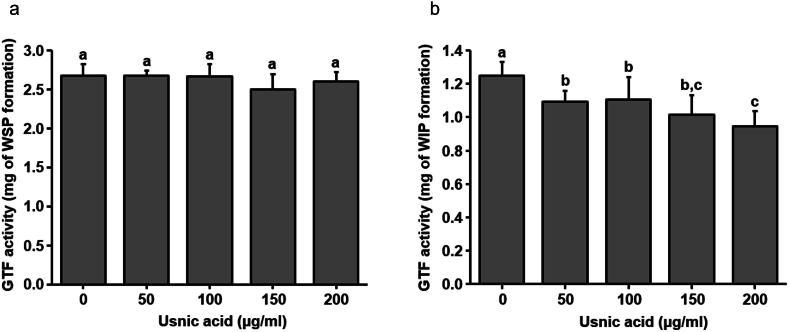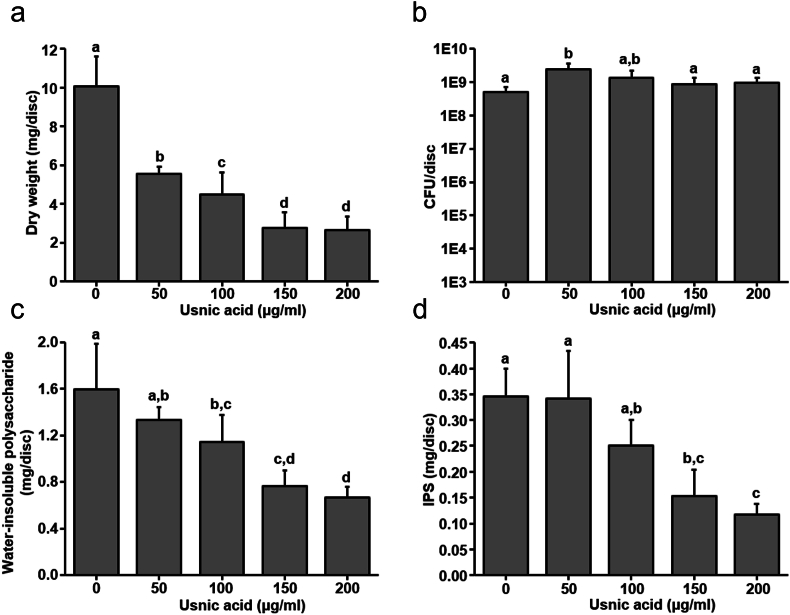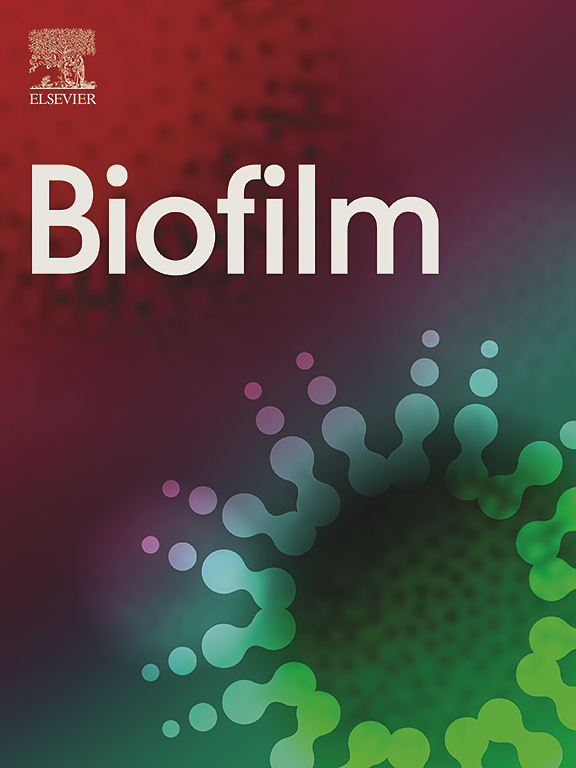Usnic酸短暂暴露抑制变形链球菌生物膜的致龋特性和复杂性。
IF 4.9
Q1 MICROBIOLOGY
引用次数: 0
摘要
细菌生物膜是微菌落高度结构化的表面相关结构,它们与自身合成的外聚合物基质紧密结合。这些外聚物质,主要是外多糖(EPS),最初帮助细菌粘附,最终在微菌落上形成一座桥,保护它们免受环境攻击和抗菌素暴露。牙齿生物膜中的细菌细胞代谢膳食碳水化合物并产生有机酸。细菌群落上的外多糖层阻碍了唾液的缓冲作用,导致蛀牙的开始,随后是龋齿的发展。考虑到目前人们对使用天然抗菌药物来消除牙齿生物膜的蛀牙特性的兴趣,本研究评估了抗菌活性以及每天两次短暂暴露(1分钟)的usnic酸对变形链球菌生物膜产酸、耐酸和三维结构发展的影响。在生物膜发育过程中,每天对生物膜进行两次短暂处理,并通过生化、微生物和显微镜检查对生物膜进行分析。本研究的结果表明,与未处理的生物膜相比,用usus酸处理的生物膜细胞的毒力特性显著降低。此外,每天两次短暂暴露于usnic酸显著破坏了酸的产生,并通过破坏EPS的产生降低了变形链球菌生物膜的复杂性。短暂暴露于usnic酸抑制葡萄糖基转移酶(GTF)酶的产生及其酶活性,导致生物膜基质上EPS的产生受到抑制。综上所述,usic酸处理通过抑制产酸、耐酸和破坏细胞外多糖(EPS)的形成,降低了变形链球菌生物膜的致龋特性和复杂性,表明其具有预防龋齿的潜力。本文章由计算机程序翻译,如有差异,请以英文原文为准。



Usnic acid brief exposure suppresses cariogenic properties and complexity of Streptococcus mutans biofilms
Bacterial biofilms are highly structured surface associated architecture of micro-colonies, which are strongly bonded with the exopolymeric matrix of their own synthesis. These exopolymeric substances, mainly exopolysaccharides (EPS) initially assist the bacterial adhesion and finally form a bridge over the microcolonies to protect them from environmental assaults and antimicrobial exposure. Bacterial cells in dental biofilm metabolize dietary carbohydrates and produce organic acids. The blanket of exopolysaccharides over the bacterial communities hinders the buffering by saliva, contributing to the initiation of tooth decay followed by the progression of dental caries. Considering the current interest towards the use of natural antimicrobial agents to disarm the cariogenic properties of dental biofilm, this study evaluated the antimicrobial activity and the effect of twice daily brief exposure (1 min) of usnic acid on acid production, acid tolerance and development of 3-dimensional architecture of Streptococcus mutans biofilm. Herein, biofilms were briefly treated twice daily during biofilm development and biofilms were analyzed by using biochemical, microbiological and microscopic examination. Results obtained in this study showed a significant reduction in virulence properties of biofilm cells treated with usnic acid in compared to non-treated biofilms. Furthermore, twice daily brief exposure of usnic acid significantly disrupted the acid production and reduced the complexity of Streptococcus mutans biofilm by disrupting the EPS production. Brief exposure of usnic acid inhibited the production of glucosyltransferase (GTF) enzymes and their enzymatic activity leading to inhibition in production of EPS on the biofilm matrix. In conclusion, usnic acid treatment reduced the cariogenic properties and complexity of S. mutans biofilm by inhibiting acid production, acid tolerance and disrupting extracellular polysaccharide (EPS) formation, indicating its potential for preventing dental caries.
求助全文
通过发布文献求助,成功后即可免费获取论文全文。
去求助

 求助内容:
求助内容: 应助结果提醒方式:
应助结果提醒方式:


